Delirious New Orleans
Delirious New Orleans
Manifesto for an Extraordinary American City
Stephen Verderber FOREWORD BY Kevin Alter
Roger Fullington Series in Architecture
UNIVERSITY OF TEXAS PRESS  AUSTIN
AUSTIN
Publication of this book was made possible in part by support from Roger Fullington and a challenge grant from the National Endowment for the Humanities as well as a generous subsidy from Clemson University.
Copyright 2009 by the University of Texas Press
All rights reserved
Printed in China
First edition, 2009
Requests for permission to reproduce material from this work should be sent to:
Permissions
University of Texas Press
P.O. Box 7819
Austin, TX 78713-7819
www.utexas.edu/utpress/about/bpermission.html
 The paper used in this book meets the minimum requirements of ANSI/NISO Z39.48-1992 (R1997) (Permanence of Paper).
The paper used in this book meets the minimum requirements of ANSI/NISO Z39.48-1992 (R1997) (Permanence of Paper).
LIBRARY OF CONGRESS CATALOGING-IN-PUBLICATION DATA
Verderber, Stephen.
Delirious New Orleans : manifesto for an extraordinary American city / Stephen Verderber ; foreword by Kevin Alter.
p. cm. (Roger Fullington series in architecture)
Includes index.
ISBN 978-0-292-71753-4 (cloth : alk. paper)
ISBN 978-0-292-74366-3 (e-book)
ISBN 978-0-292-78564-9 (individual e-book)
1. Vernacular architectureLouisianaNew Orleans. 2. Outsider artLouisianaNew Orleans. 3. Urban renewalLouisianaNew Orleans. 4. City planningLouisianaNew Orleans. 5. Hurricane Katrina, 2005. 6. New Orleans (La.)Buildings, structures, etc. I. Title.
NA735.N4V47 2009
720.976335dc22
2008031036
Photo and Illustration Credits2.12.3, 2.13, 4.14.3, 4.11, 4.14, 4.164.18, 4.24: Courtesy, United States Library of Congress; 2.12, 2.24, 4.4, 4.5: Courtesy, The Historic New Orleans Collection; 2.19: Alphonse Goldsmith, Photographer. Courtesy, The Historic New Orleans Collection; 3.32, 3.33, 4.30: Courtesy, Worldwide Photos; 4.64.10, 4.12: Courtesy, Leonard V. Huber, and Pelican Publishing Company, Gretna; 4.13: Courtesy, Allen Freeman, Photographer; 4.15: Alfred Ward, Illustrator. Courtesy, New Orleans Public Library; 4.19: Frank Leslies Illustrated Newspaper. Courtesy, New Orleans Public Library; 4.20, 4.21: Courtesy, New York Historical Society, and Pelican Publishing Company, Gretna; 4.22, 4.23: Courtesy, New Orleans Public Library; 4.31: Courtesy, United States Geological Survey; 5.3: Courtesy, The Times-Picayune; 6.3: The Estate of Nathaniel Curtis. Courtesy, Southeastern Architectural Archives, Tulane University; 6.4, 6.6, 6.13, 6.156.17: Frank Lotz Miller, Photographer. Courtesy, Lois Frederick Schneider; 6.5, 6.7, 6.11, 6.14, 6.18: Alexander G. Verderber, Photographer; 6.8, 6.9: Courtesy, Frances Curtis; 6.10: Courtesy, Arthur Q. Davis, Curtis & Davis, and the Southeastern Architectural Archives, Tulane University; 6.12: Courtesy, Southeastern Architectural Archives, Tulane University
All other photos by Stephen Verderber. Stephen Verderber, 2008.
Foreword
Kevin Alter
PERUSING THE PAGES OF CONTEMPORARY journals and books on architecture, the architectural observer is struck by the innovation and dynamism of an array of individual buildings. Typically portrayed as stand-alone edifices, architecture is generally communicated in terms of an easily consumable object and valued by the degree of formal dexterity and innovation that it might display. Much harder to grasp are the vicissitudes of place and culture in which a building finds its place, and more generally, its meaning. In contrast to the implications put forth through these publications, the keen observer finds that a buildings ultimate meaning and power lie not in understanding it in isolation, but rather in the context of the various conditions of its circumstancephysical, climactic, cultural, and social. Moreover, many of the most powerful examples in the field are firmly rooted in their situation, and a deep understanding of that situation is paramount in posing a poignant and meaningful piece of architecture. Indeed, there are celebrated architects such as Glenn Murcutt, whose work is published internationally, but who also categorically refuses to build outside of the realm in which he is intimately familiar. Rather than accepting the implied meaning of his work, which might be transmitted through the glossy pages of a journal or monograph, the value of his buildings is rooted to a deep understanding of, and intervention into, the context of which the buildings are a part.
Beyond a visceral knowledge of a given place, borne of many years of living and working within it, architects often-times search for ways to achieve deep insight into the places in which they might propose working. Interrogations of place abound, and regularly form the basis of meaningful architectural interventions. Particularly noteworthy in this regard are studies such as Rem Koolhaass seminal 1978 book, Delirious New York: A Retroactive Manifesto for Manhattan, to which Delirious New Orleans owes its title and desires a conscious comparison. Koolhaass book reveals New York City in a brilliant new light, and in the process identifies and underlines those aspects of the city that he finds valuable. In addition to the insight it has provided into the field, the book is a roadmap to those aspects of the contemporary city to which his much-celebrated work relates. The notion of cross-programming that he identifies as particularly poignant in Manhattan, for example, resounds everywhere within his own work.
Turn now to another great and beguiling American city, New Orleans. While teaching at Tulane Universitys School of Architecture, Stephen Verderber set himself on a project of photographing poignant examples of local vernacular architecture as a means of identifying those aspects of the physical culture of New Orleans that do not often make it into academic discussions about the city. After Hurricane Katrina changed the face of that city forever, Verderber, one of the many refugees of the storm, found himself with an awesome opportunity: to bring into focus the invaluable collection of vernacular architecture that graced the city, and was, along with its attendant culture and values, in very probable danger of disappearing altogether. Armed with the photographs taken just prior to Katrina, Verderber returned to these same places to document their post-hurricane state. The comparison speaks for itself, and the potential loss is compelling. From this basis, Verderber proceeds to write his own manifesto for the city of New Orleans, and offer his insights into the dangers, dilemmas, and culture of the city.
Delirious New Orleans begins as a poignant photo-essay and personal reflection on a particularly outspoken collection of vernacular architecture in New Orleans. In a variety of ways, the book points to the importance of these representations of culture, particularly in distinction to their high architecture counterparts. The photographs especially capture a vibrant culture, and in pairing images taken both before and after the hurricane, leave open the question about the role (or lack thereof) of such artifacts in the rebuilding of the city. The images taken before the hurricane document the rich life of New Orleans in ways not present in the arguments currently being made for rebuilding strategies, and the images taken after make vividly clear another devastating chapter of loss for the city. Delirious New Orleans makes the argument that this collection of vernacular architecture serves as a cultural touchstone, and that its presence is a necessary component to the great American city of New Orleans.
Next page
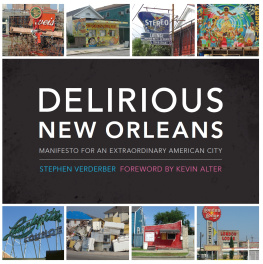
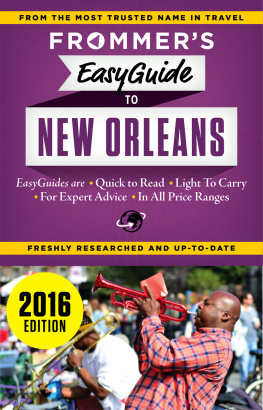
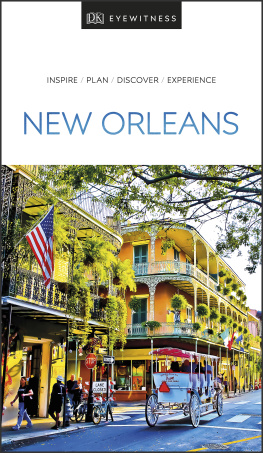
![Schwam - Frommers New Orleans [2011]](/uploads/posts/book/250009/thumbs/schwam-frommer-s-new-orleans-2011.jpg)
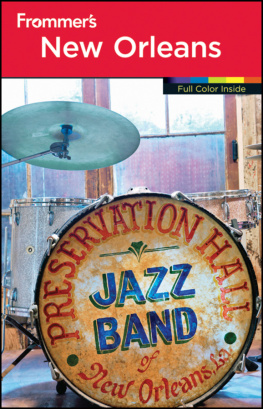
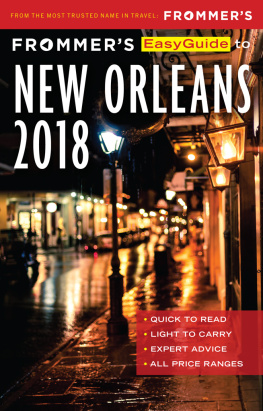
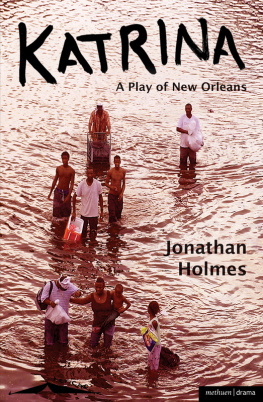
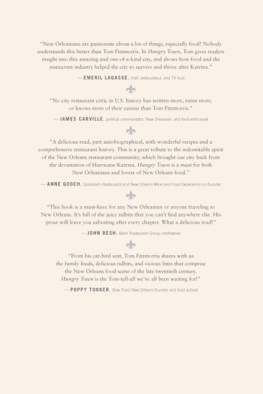




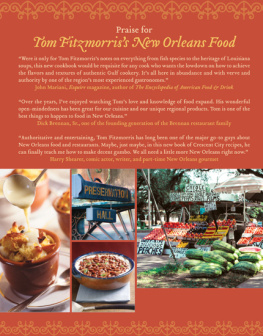
 AUSTIN
AUSTIN The paper used in this book meets the minimum requirements of ANSI/NISO Z39.48-1992 (R1997) (Permanence of Paper).
The paper used in this book meets the minimum requirements of ANSI/NISO Z39.48-1992 (R1997) (Permanence of Paper).